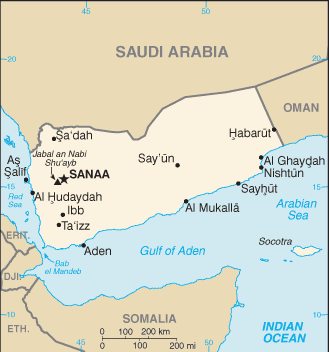More than three months into the Saudi war against Yemen, the naval blockade against a country that imports some 90 percent of its food by sea continues apace, and we are just now getting out first metrics on how much shipping traffic has slowed to Yemen.
 According to an aid assessment by the US Navy, released today by Reuters, some 100 ships went to Yemen in March, the month the war started. In June, only 42 ships managed to reach port, many of them UN operated aid ships in the south.
According to an aid assessment by the US Navy, released today by Reuters, some 100 ships went to Yemen in March, the month the war started. In June, only 42 ships managed to reach port, many of them UN operated aid ships in the south.
We don’t have any formal data on the number of ships that would normally reach Yemen in peacetime, but the port of Aden alone, admittedly one of Yemen’s biggest, averages over 1,000 ships annually. Aid deliveries by plane, more common for medical aid, have also been cut off as the Saudis bombed airports rather than allow the planes to land.
Aid groups have been warning in recent weeks that the food shortages are getting worse and worse, and the country is on the brink of full-scale famine. Food prices were already skyrocketing in April and May, and now in many cases food is unavailable at any price.
That the US Navy is keeping track of the blockade as part of an aid assessment is particularly surprising, since they have contributed warships at time to participate in the blockade. The US has only boarded a handful of ships during the war, and its contribution to the war effort has mostly been backing airstrikes.


